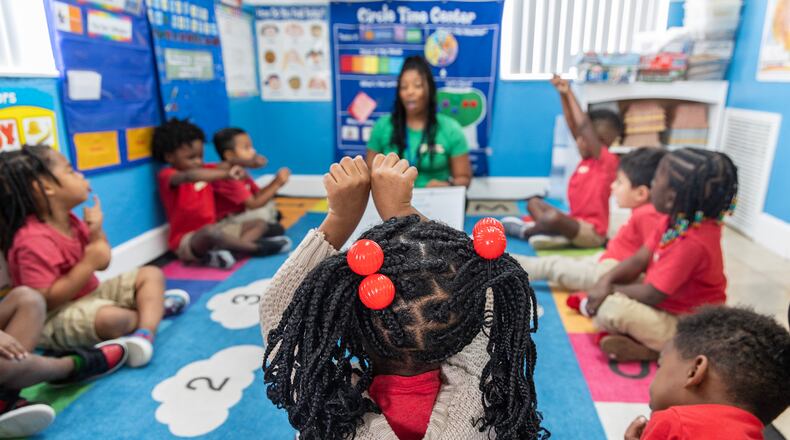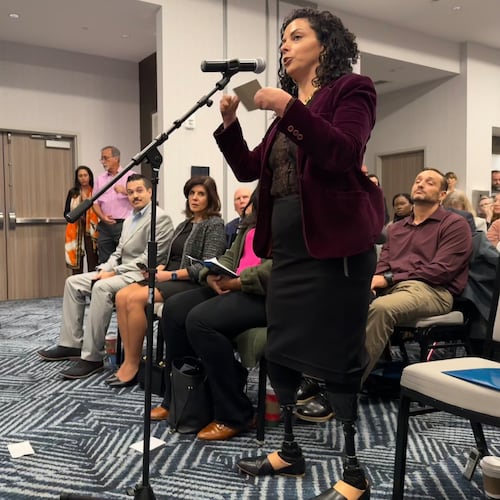Democratic postmortems reflect the party wrestling over a number of explanations for the party’s losses. But these analyses provide few if any substantive proposals for moving forward. Democrats need a policy focus that moves beyond trying to figure out better messaging for past initiatives, like President Joe Biden’s infrastructure bill. Democrats instead should focus on a substantive area that can have immediate tangible benefits (and that challenges the Trump administration to “put up or shut up”) but that also addresses core problem of inequality and appeals to a broad constituency.
Children’s well-being checks these boxes.
Credit: Handout
Credit: Handout
The issue is clearly important in and of itself, as our children are doing poorly relative to their peers around the world. American kids score 36th out of 38 across three key dimensions of child well-being. In mental health, U.S. adolescent suicide and depression rates are high and rising. In physical health, our kids are world “leaders” in obesity rates. And in basic skills, 40% of our 15-year-olds lack basic proficiency in math and reading. Our kids also face the looming threat of disease outbreaks. Even as cases of measles, for example, have surged worldwide, U.S. vaccination coverage among kindergartners has fallen below the target vaccination rate of 95%, leaving about 250,000 kids at risk. By the end of March, measles cases already exceeded the number of cases in all of 2023. And gun violence is the primary killer of children and adolescents, surpassing car crashes.
What would a focus on children’s well-being actually mean? Several policies and programs have made real improvements in our children’s lives. One is the child tax credit: The one-year expansion of the CTC in 2021 reduced child poverty to a historic low of 5.2%, which then rebounded to 12.4% in 2022 and 13.7% in 2023 once this expansion expired. The overwhelming majority (91%) of lower-income families used these payments to cover their basic household expenses and education costs, spending that supported the health and nutrition of their kids.
A second policy is early child care and education. As Indiana’s early learning program has shown, things such as developmental preschool, Head Start and licensed child care centers promote children’s social skills, help screen for health and behavioral problems, allow parents to study and/or work, and generally lead to better results in later life. A related policy, paid family leave, has been shown to literally “save the lives of children” because of, for example, opportunities for continued breastfeeding and opportunities for parents to make sure their child is up to date with well-child visits and vaccinations. Finally, healthier school meals have numerous benefits, including alleviating food insecurity, improving nutrition and generally boosting kids’ “school readiness” and ability to learn.
The Harris campaign championed several of these measures, but reproductive rights dominated the campaign message. In addition, the focus on children was likely weakened by conflicts over child care policy within the Democratic Party and liberal allies leading up to the presidential campaign. There’s a need for a more full-throated, cohesive strategic focus on children’s health and well-being, one that includes stronger families. And apart from its substantive importance, such a focus has the potential so be a winning political message.
Bipartisan support for policies such as early childhood education, paid family leave, an expansion of the child tax credit and healthier school meals suggests that this focus has the potential to reduce if not overcome polarization. It also compels progressives to go beyond simply attacking President-elect Donald Trump to come up with and evaluate concrete alternatives. It takes seriously the critique of the Harris campaign that “Not being Trump was never enough.” It leverages and takes seriously Americans’ belief in the importance of families by encouraging an understanding of the links between parents and kids (see for example the “two-generational” approaches to family well-being). In so doing, it sheds light on family-based practices, such as family meals, that are shown to enhance resilience and school readiness in youth. It also compels us to address a key issue affecting the opportunity of kids to grow up in stable households: affordable housing. And, it calls the Trump administration’s bluff by shedding light on the results of his policies, How, for example, will Vance’s pro-birth push for higher fertility rates translate into ensuring that children grow up in a health environment after they’re born? Will Robert F. Kennedy Jr. vaccine skepticism “Make Measles Great Again”?
Finally, this focus has some broader political and even civic benefits. It highlights the importance of public institutions, especially schools and public health agencies, and it challenges those institutions to perform. It avoids the risk of ceding ground to the “New Right,” which combines pro-children welfare statism with social/cultural conservatism (and illiberal politics). It encourages people to appreciate evidence and science as to what works and why. Indeed, as one scholar has noted, “Child labor reform in the late 19th century represents an early milestone in the use of scientific arguments.” This kind of evidence-based strategy can build on “child impact statements” or “child and youth impact assessments.” These are analytical instruments, similar to the “Is it Good For the Children Campaign” adopted by Rock Hill City, South Carolina, useful for drawing attention to the actual consequences of public policies for our kids and families. And finally, this initiative can draw on California’s experience in building local networks in the form of county-level First 5 commissions devoted to early learning and effective parenting.
I suggest this initiative be named “Protecting Our Children.” This slogan integrates opportunity with threat. It recognizes Americans’ concern over immediate vulnerability faced by Americans, a key component in Trump’s victory. But it also highlights the potentials for collective and long-term responses to the challenges facing our kids and families.
Rick Doner is the Goodrich C. White Professor Emeritus in the Department of Political Science and an adjunct professor in the Rollins School of Public Health at Emory University. These opinions are his own and do not reflect those of the university or its affiliates.
About the Author
Keep Reading
The Latest
Featured


